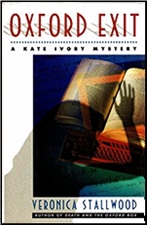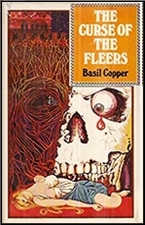REVIEWED BY DAVID VINEYARD:
RICHARD MASON – The Fever Tree. The World Publishing Co., hardcover, 1962. Signet T2123, paperback, 1963.

It was a battered paperback with a lurid cover and the first actual novel, not a mystery or science fiction or classic, I ever read on my own, Richard Mason’s The World of Suzy Wong.
And yes, the lurid cover had a lot to do with my reading it.
The story of a Chinese dance-hall girl/prostitute child-woman who becomes the obsession of an English artist in Hong Kong (in the movie the artist became an American played by William Holden), it is a much less racy novel than you might expect. Mason was a first class writer with something to say, often about the rocky territory of inter racial romance in the Near and Far East (his 1948 novel The Wind Cannot Read is about a British soldier in WW II who falls for a Japanese translator was also filmed in Technicolor with Dirk Bogarde).
It was still a bit over the head of a twelve-year-old, but by then I had seen the William Holden movie with the gorgeous Nancy Kwan as Suzy, and was entranced. So entranced that I would actually go to the real club in Hong Kong where Suzy supposedly worked when I was sent there in the seventies, and meet a few girls who claimed (probably not truthfully) to have known her (whether she was real or not, she was real enough to them) and Mason.
Even Richard Hughes (Dikko Henderson in Ian Fleming’s You Only Live Twice) wasn’t certain she hadn’t been real, if not quite what Mason made out of her, and Hughes knew China and Japan like the back of his hand, even down to a personal relationship with Mao.

Suzy Wong had been around a while when I read the Signet paperback, and as a result about a year later, I happened to buy the Signet edition of what proved to be Mason’s last novel, The Fever Tree (I still remember the cover), that didn’t look like the sort of book I usually read at that tender age, but turned out to be pretty much exactly my cuppa, the story of a British traitor assigned to arrange the assassination of the king of Nepal, lay the blame at the feet of India and a young Indian radical inflamed by the British agent provocateur, and drive Nepal in Red Chinese hands.
That was the plot/McGuffin, what the novel was really about is that of a soul lost man who finds a woman he loves too late to save himself or her, more Graham Greene than Ian Fleming or John Le Carre.
Major Ronald Birkett is the protagonist, very much the very last of the Raj, the Pukka Sahib type with a clipped little military mustache and a handsome rather horsey English face browned by years in the sun, a writer of travel and adventure fawned over by people he secretly has contempt for and using his background as a cover for his assignments for the Red Chinese.
“I’m not a killer. I’ve never killed anybody in my life, and I’m not proposing to start.â€
“Don’t doubt it for a minute, old man. Too smart, a chap like you, to do a job like that yourself—no future in it. Best to get some other chap to do it for you.â€
As we meet him he is in a former British club turned bar in India feeling superior to everyone while he waits to meet a contact for his next mission.
Yes, a decade ago, Birkett thought, the only Indians you’d have seen in this place were the waiters in compulsory white gloves to conceal the grey hands. And now the few British who came here fell over themselves to behave like Indians while the Indians behaved more like the British than the British themselves.

Attractive and dangerous, Birkett is ruthless in his work and with women, at least he always has been until he meets Lakshmi: “The fans twirled like aeroplane propellers under the high vaulted ceiling, fluttering the blue silk sari of the girl along the bar. She had huge dark sad eyes like the eyes in Persian paintings, and a red spot on her forehead to match the red paint on her nails.â€
The “girl with the Persian eyes,†will come to haunt Birkett as his mission leads him from India to Nepal, a brief affair in India with a married woman, turning into something more serious for both of them.
Fans of James Bond may uncomfortably be reminded of some of 007’s attitudes toward women, the world, and his work considering Birkett works for the other side.
He felt the gun below his armpit under the shirt. Firm as a rock—nice bit of workmanship, that harness. The customs weren’t going to frisk him, so no difficulty there. He opened his briefcase and took out a book. The memory of the girl’s face had faded. He gave her no further thought. He began to read.
Whether that was Mason’s intent of not it adds a nice irony to the book. Save for his pose as a tired reminder of the Raj Birkett is a modern man with all the questions that involves.
The Fever Tree is a suspenseful novel, an excellent portrait of an agent provocateur at work, and a fine spy novel. What destroys Birkett, what makes him into a human and ends his mission while saving the man if not the spy makes the book a fascinating read.
There is no shortage of action and suspense of the old-fashioned thriller kind either, as Birkett tries to stop the assassination he has set in motion and he and Lakshmi try to flee his failed mission where Lakshmi finds her romance has become all too real and the inevitable tragedy of Birkett’s life takes its final shape.
Only an hour ago she had still taken for granted that she would be back in India soon. And now suddenly she was not going back to India at all, was never going to see it again. It lay behind them—each moment took them farther away. And instead she was going to an unknown world, shut off from all that was familiar to her behind the barrier of ice and snow.
Ironically, Birkett finds himself trapped by his own illusion of love as much as the burgeoning conscience it creates.
The Fever Tree is a first class novel of intrigue and adventure daring to tackle more serious themes. It’s a shame Mason chose to make this his last book. He might well have opened up a new door in a too short career. It builds to a powerful and ironic ending, quite unforgettable, and a reminder what a good writer Mason was, and just how seriously the spy novel could be taken as both novel and entertainment.

